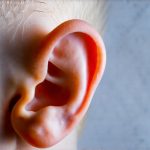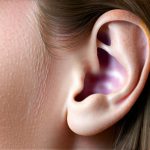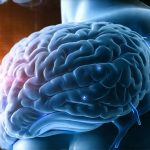Motion sickness is a remarkably common experience, affecting people of all ages and backgrounds. From the gentle rocking of a boat to the winding curves of a mountain road, many individuals find themselves battling nausea, dizziness, and even vomiting when their bodies are subjected to movement that conflicts with what their inner ears perceive. While traditionally understood as a neurological issue stemming from sensory mismatch – essentially, your eyes telling you one thing while your inner ear tells you another – growing research is revealing a far more complex picture, one where the gut microbiome plays a surprisingly significant role. This often-overlooked community of trillions of microorganisms residing in our digestive tract isn’t just about digestion; it profoundly influences numerous bodily systems, including the nervous system and immune function, both of which are intimately connected to motion sickness susceptibility.
For years, the focus has remained squarely on vestibular rehabilitation exercises and medications aimed at suppressing symptoms or retraining the brain. However, acknowledging the gut-brain axis – the bidirectional communication network between the gastrointestinal tract and the central nervous system – opens up a new frontier in understanding and potentially mitigating motion sickness. This isn’t about eliminating movement entirely, but rather exploring how we can optimize our internal environment to better cope with it. The composition of your gut microbiome can directly impact neurotransmitter production, inflammation levels, and even vagus nerve activity, all factors that have been implicated in the experience of motion sickness. Understanding this intricate relationship is key to developing more holistic and effective strategies for managing this pervasive condition.
The Gut-Brain Axis & Motion Sickness
The gut-brain axis isn’t a new concept, but its relevance to motion sickness is only recently gaining traction. This complex network relies heavily on the vagus nerve – often called the “wandering nerve” – which acts as a direct communication highway between the gut and the brain. Signals traveling along this pathway can influence mood, cognition, and even physiological responses like heart rate and digestion. A disrupted or imbalanced microbiome can send aberrant signals to the brain via the vagus nerve, potentially exacerbating symptoms associated with motion sickness. In essence, an unhealthy gut can amplify feelings of nausea and disorientation.
The microbiome also plays a critical role in producing neurotransmitters such as serotonin, dopamine, and GABA – all key players in regulating mood and sensory processing. Serotonin, for example, is heavily involved in the emetic reflex (the vomiting response) and its levels are significantly altered during motion sickness. A diverse and healthy gut microbiome supports optimal neurotransmitter production, potentially mitigating the intensity of these responses. Conversely, a dysbiotic microbiome – one characterized by an imbalance of microbial species – can disrupt neurotransmitter synthesis, contributing to increased susceptibility to motion sickness.
Furthermore, chronic inflammation is increasingly recognized as a significant factor in many health conditions, and the gut microbiome has a profound impact on systemic inflammation levels. An imbalanced microbiome can lead to increased intestinal permeability (often referred to as “leaky gut”), allowing inflammatory molecules to enter the bloodstream and trigger an immune response. This heightened state of inflammation can sensitize the nervous system and make individuals more vulnerable to motion sickness symptoms. A healthy gut barrier, supported by a diverse microbiome, is crucial for minimizing systemic inflammation. If you are wondering how to check if your gut is absorbing nutrients properly, this can be a great starting point.
The Role of Specific Microbial Species
Research into specific microbial species linked to motion sickness is still in its early stages, but several promising avenues are emerging. Certain bacteria, like Lactobacillus and Bifidobacterium, have been shown to possess anti-inflammatory properties and may help modulate the gut-brain axis, potentially reducing susceptibility to nausea and vomiting. These probiotics are often found in fermented foods such as yogurt, kefir, and sauerkraut. However, it’s important to note that probiotic supplementation isn’t a one-size-fits-all solution; individual responses can vary significantly depending on existing microbiome composition and other factors.
Conversely, an overabundance of certain potentially pathogenic bacteria has been linked to increased gut permeability and inflammation, which, as discussed earlier, can worsen motion sickness symptoms. Identifying these imbalances through stool testing (under the guidance of a healthcare professional) may help tailor dietary or lifestyle interventions to restore microbial balance. It’s also crucial to remember that diversity is key – a microbiome with a wide range of species tends to be more resilient and adaptable than one dominated by a few select strains.
Another area of interest is the role of short-chain fatty acids (SCFAs), produced when gut bacteria ferment dietary fiber. SCFAs have numerous beneficial effects, including strengthening the gut barrier, reducing inflammation, and modulating neurotransmitter production. A diet rich in fiber – fruits, vegetables, whole grains, and legumes – provides the necessary fuel for these beneficial bacteria to thrive and produce SCFAs. Prioritizing a fiber-rich diet is therefore a cornerstone of gut health and may indirectly help mitigate motion sickness. Understanding signs that your gut microbiome needs a reset can allow for proactive intervention.
Dietary Strategies & Prebiotics
Beyond probiotic supplementation, dietary strategies focusing on prebiotics can also play a crucial role in shaping the gut microbiome. Prebiotics are essentially food for beneficial bacteria – non-digestible fibers that selectively promote the growth of favorable microbial species. Foods rich in prebiotics include garlic, onions, leeks, asparagus, bananas, and oats. Incorporating these into your diet can help nourish your existing beneficial bacteria and improve overall gut health.
Another important dietary consideration is reducing processed foods, sugary drinks, and excessive amounts of red meat. These types of foods can disrupt the microbiome balance, promote inflammation, and impair gut barrier function. A Mediterranean-style diet – rich in fruits, vegetables, whole grains, lean proteins, and healthy fats – has been shown to support a diverse and resilient microbiome.
It’s also important to consider timing your meals around travel. Eating a light meal before or during travel can sometimes help reduce motion sickness symptoms, but heavy, fatty foods should be avoided as they can exacerbate nausea. Staying hydrated is equally crucial, as dehydration can worsen symptoms and further disrupt the gut-brain axis. Focusing on easily digestible foods and adequate hydration are simple yet effective strategies for minimizing motion sickness risk. If you want to build a gut test schedule with your doctor, it can be beneficial in the long run.
Lifestyle Factors & Future Research
While diet plays a significant role, other lifestyle factors also impact the gut microbiome and potentially influence susceptibility to motion sickness. Stress, for example, can negatively affect gut microbial composition and increase intestinal permeability. Implementing stress-management techniques such as mindfulness meditation, yoga, or deep breathing exercises may help mitigate these effects. Regular physical activity is another important factor, as it promotes gut motility and supports a diverse microbiome.
Sleep deprivation can also disrupt the gut microbiome and weaken the immune system, making individuals more vulnerable to motion sickness symptoms. Prioritizing adequate sleep – typically 7-9 hours per night – is essential for maintaining overall health and well-being. Future research should focus on identifying specific microbial signatures associated with motion sickness susceptibility, developing personalized probiotic interventions tailored to individual microbiomes, and exploring the potential of fecal microbiota transplantation (FMT) as a treatment option for severe cases.
The relationship between the gut microbiome and motion sickness is still unfolding, but it’s clear that this often-overlooked community of microorganisms plays a far more significant role than previously appreciated. By focusing on strategies to support a healthy gut – through diet, lifestyle modifications, and potentially targeted interventions – we can potentially reduce our susceptibility to this common and debilitating condition. It’s not about eliminating movement, but rather optimizing our internal environment to better navigate it. How doctors track changes in your gut over time can offer valuable insights. Additionally, consider if your gut issues are functional or structural for a more targeted approach. Finally, remember that gut test results can impact sleep quality as well.


















